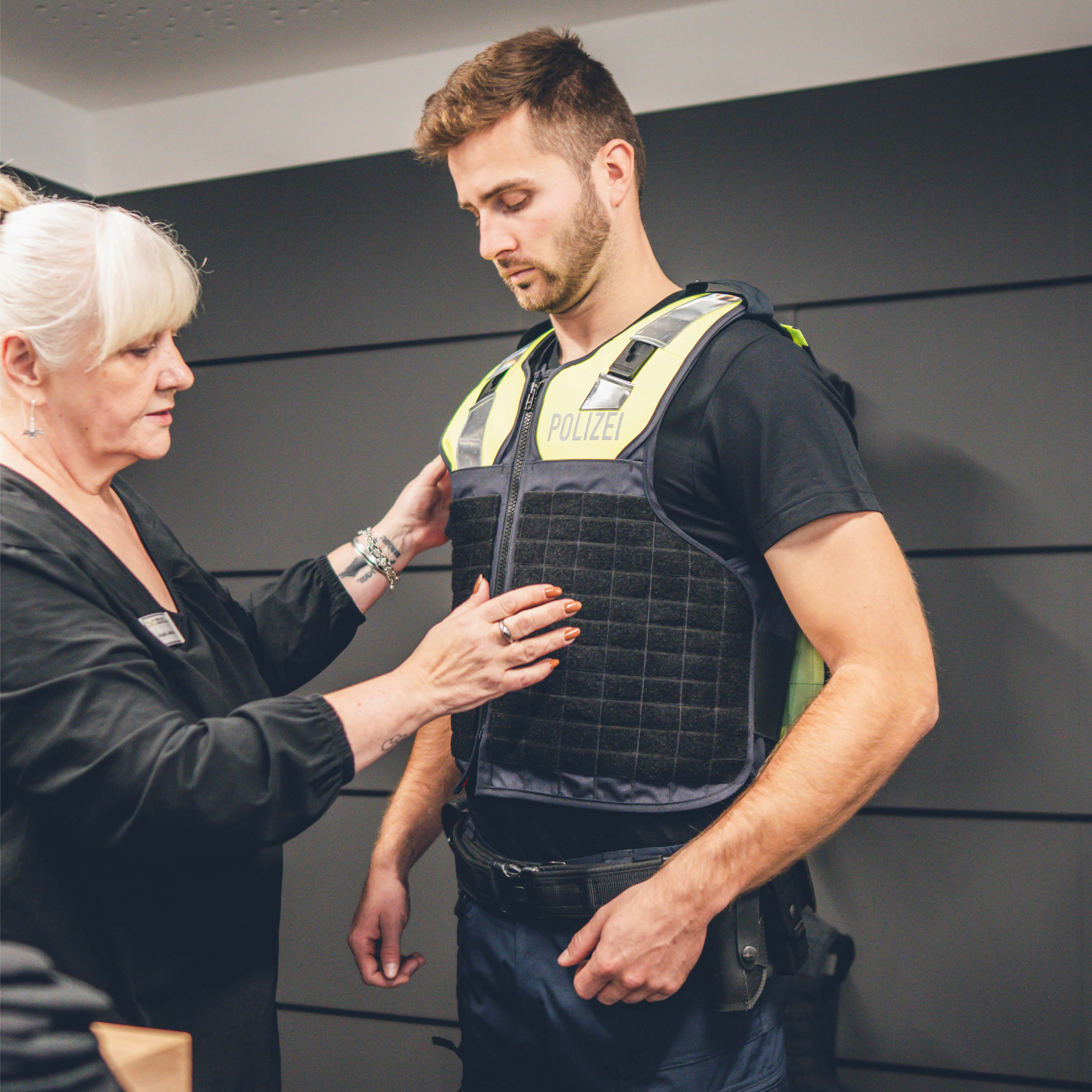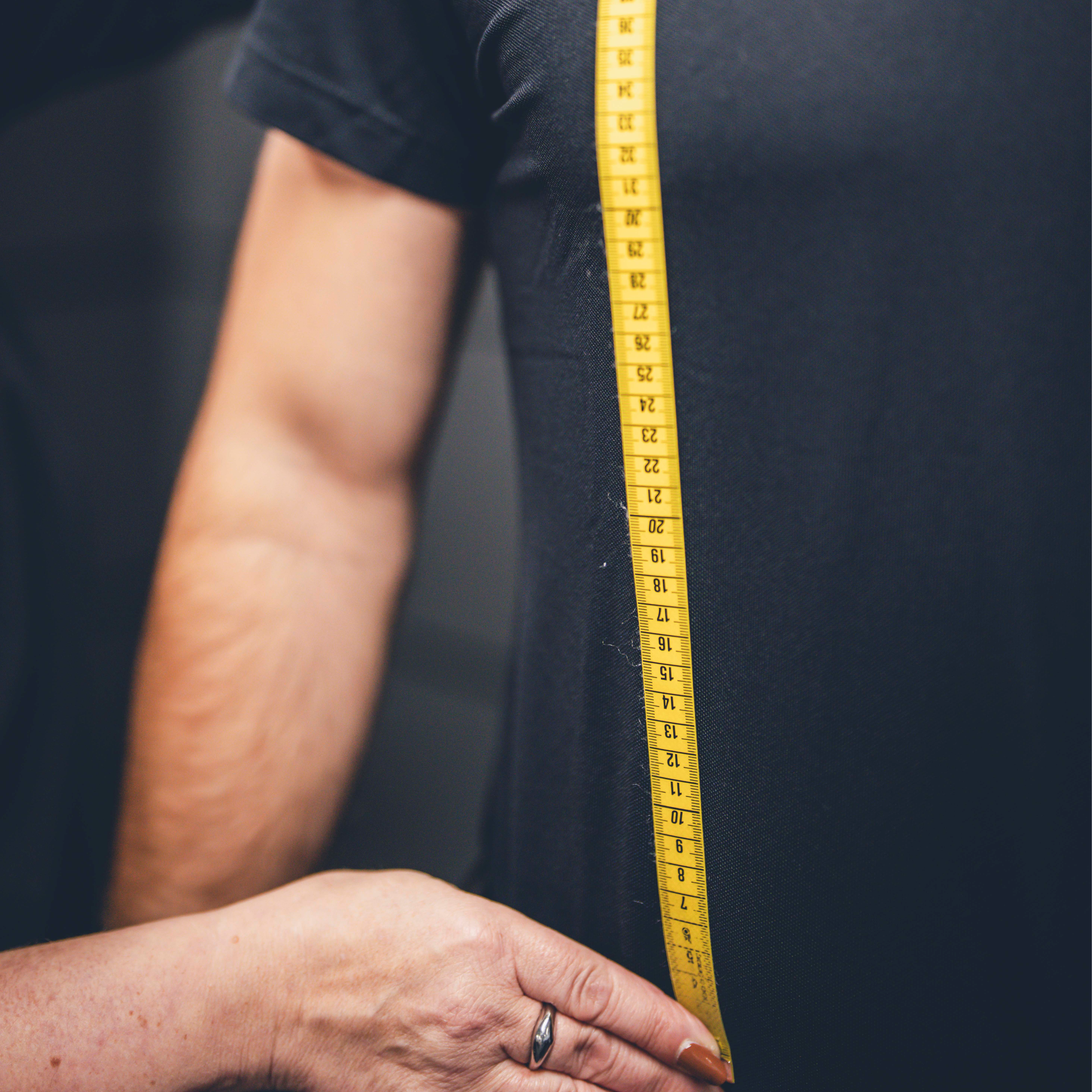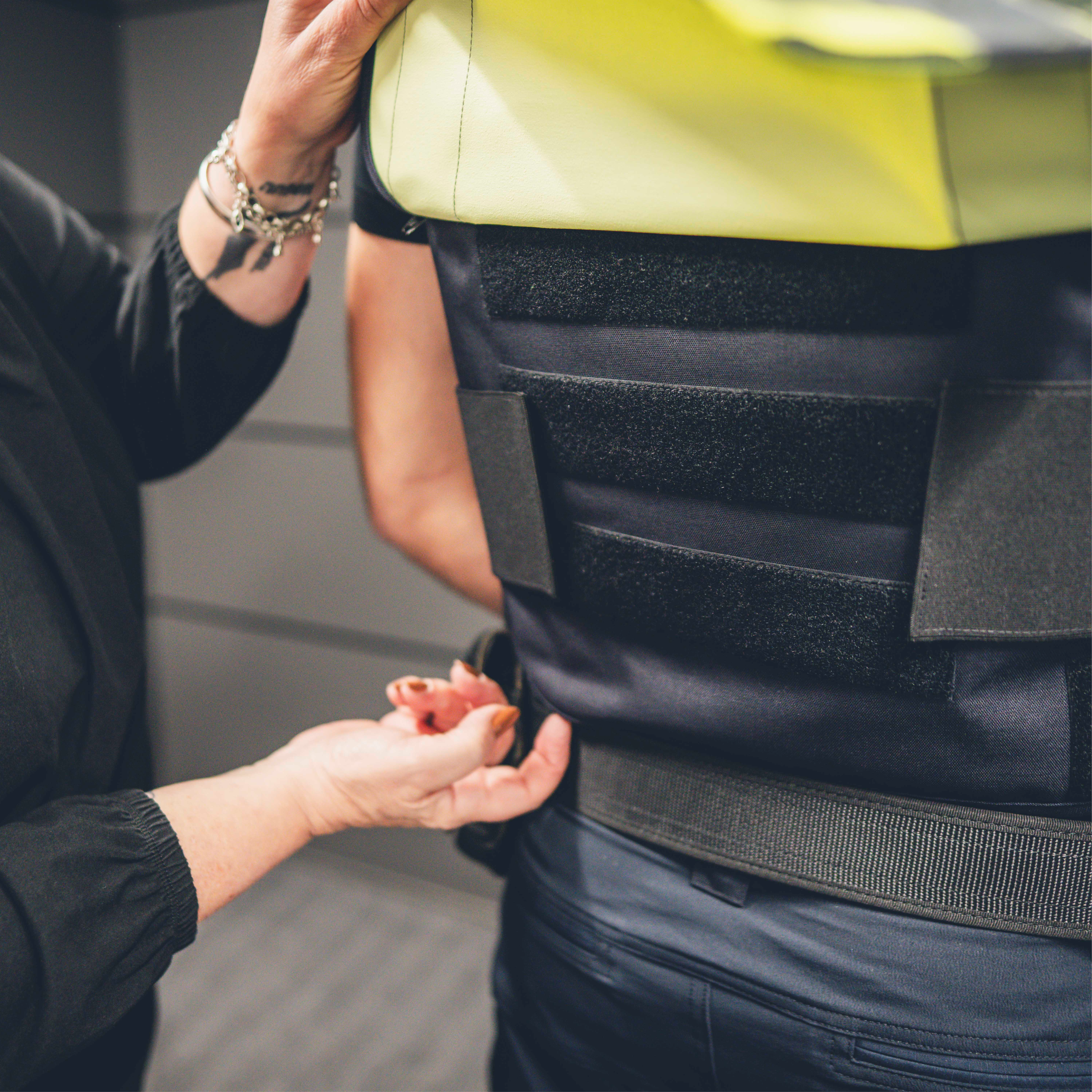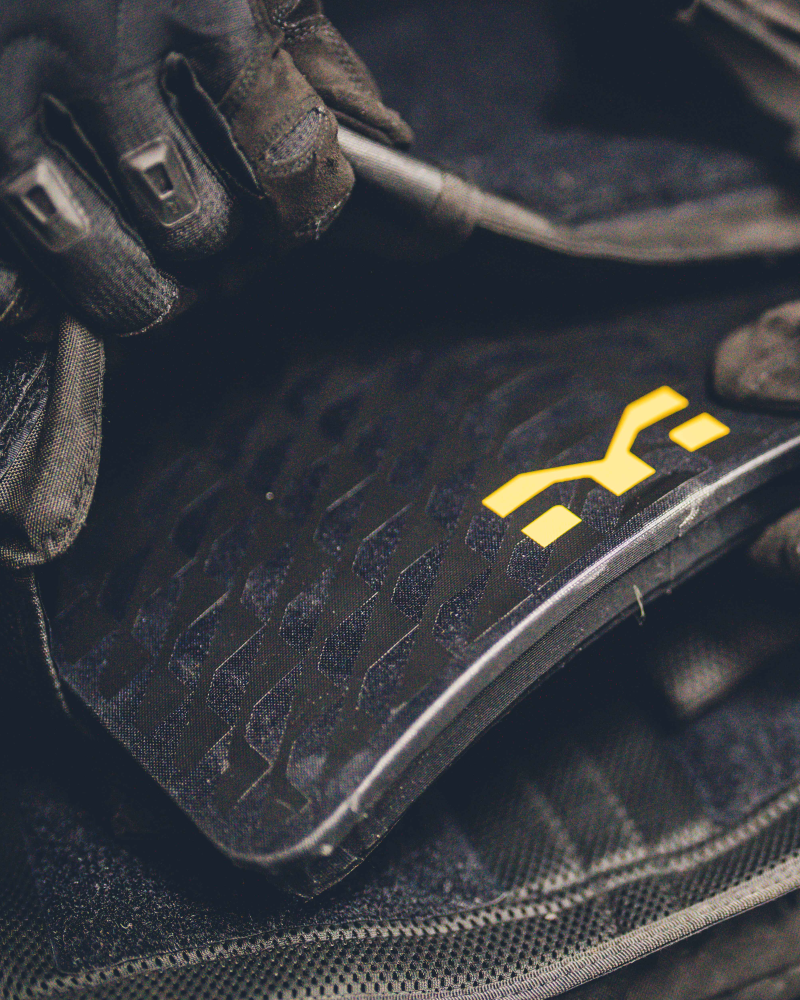
Armour fitting for maximum protection: how fit, geometry and motion interact
Maximum protection is more than a question of material. It needs to account for a precise fit and functional geometry in motion. Only once protective covers are correctly positioned and loads are optimally distributed does the equipment reach its full potential. This article takes you from anatomy to correct measuring and layering through to fine-tuning equipment in everyday use – and answers the most frequently asked questions when it comes to armour fitting.
Protected areas of the upper body
To protect yourself properly, you need to know which areas to protect. On the front side of the body, the critical region runs from the upper sternum through the heart, lungs and major blood vessels to a few finger widths above the navel. This zone is the same on the back, too.
Here the focus is on protecting the spine and central blood vessels without impairing the neck’s movement. On the sides, the armpits and the ribs are the most vulnerable areas; here, it is important to fit the protection in such a way that it avoids restricting the movement of the arms. At transition points – the neck, armpits, groin, shoulder, elbow and knee joints – precise centring and overlapping prevent gaps from appearing.

Measurement basics
The basis for an optimal fit is a reliable measurement in an upright, relaxed posture. Relevant measurements include the chest circumference at nipple height, underbust circumference, waist and hip circumference, shoulder width, back length from the C7 vertebra, the front torso length to the navel, and circumference measurements for the upper and lower arms, thighs and calf circumferences.
One to two centimetres of room for breathing and undergarments should be factored in – a setup without room to manoeuvre may feel fine when at rest, but will not work when in motion. Bust projection and underbust contour are important for female body shapes; specially shaped hard or soft ballistic plates are ideal for this purpose.

Correct adjustment of the plate carrier
With plate carriers, the height of the front ballistic body armour,fitted with a hard ballistic plate, is critical to the protection of central organs. Ideally, the top edge should be approximately level with the throat, with the plate sitting flush and in the centre. The lower edge should end in such a way that bending and breathing remain possible; ballistic vests worn too low supposedly offer more abdominal coverage, but leave the thorax unprotected and prevent hip flexion.
The rear ballistic protection mirrors the front in terms of height and width and must not protrude into the neck. Soft ballistic plates and side plates close gaps in the costal arch and sides of the thorax without pressing into the armpits or hips. The system is made stable through correctly adjusted hook-and-loop fasteners, symmetrical shoulder straps or a cummerbund that stabilises without constricting. What defines ergonomic equipment is that it supports movement.

Practical tests and fine-tuning
A fitting that appears stable in the mirror may fail under dynamic loading conditions. A stress-oriented fit test will include deep breaths, overhead and horizontal arm movements, bending, trunk rotations and lateral inclinations. Lunges, deep squats, stair stepping and short sprints can also be used as tests. Depending on the discipline involved, floor transitions (e.g. from kneeling to standing), changing from lying on the stomach to lying on the back and crawling briefly are all relevant movements.
For functional testing purposes, realistic movement patterns such as weapon strikes, shield manoeuvres, striking and thrusting sequences, or comparable technical sequences are simulated. The most significant problems regarding fit can often be solved by making minor adjustments to straps, arming points or padding thicknesses.

Maintenance, readjustment and seasonal change
Straps and materials change the more they are worn. During the first few uses, straps and textile components stretch, which is why it is normal to readjust the fit after wearing the setup several times. It is recommended to check seams, rivets, sliders, hook-and-loop and elastic elements regularly. Seasonal setups should be documented with photos and measurements, so they can be reproduced quickly in summer, winter and competition conditions.
Body size changes of around five percent are also a good occasion to re-check the fit. Modular padding and ready access to spare parts make fine-tuning easier and extend the life of your equipment.

Conclusion
Maximum protection results from a precise fit and correct geometry, well thought-out load distribution, realistic tests and regular maintenance. The areas requiring protection include the upper sternum through to the point just above the navel at the front, the spine at the back, the central blood vessels and the flanks. Precise centring is crucial to prevent gaps at the neck, armpits, groin and joints.
The basis for all of this is a reliable measurement taken in an upright, relaxed posture. Bust projection and underbust contour should also be taken into account for women. Since straps and textiles do become worn in, it is normal to reset them after using the setup for a few times. Regular inspections of seams, fasteners and elastics, photographic documentation of seasonal setups, and modularity and spare parts ensure functionality and durability.

